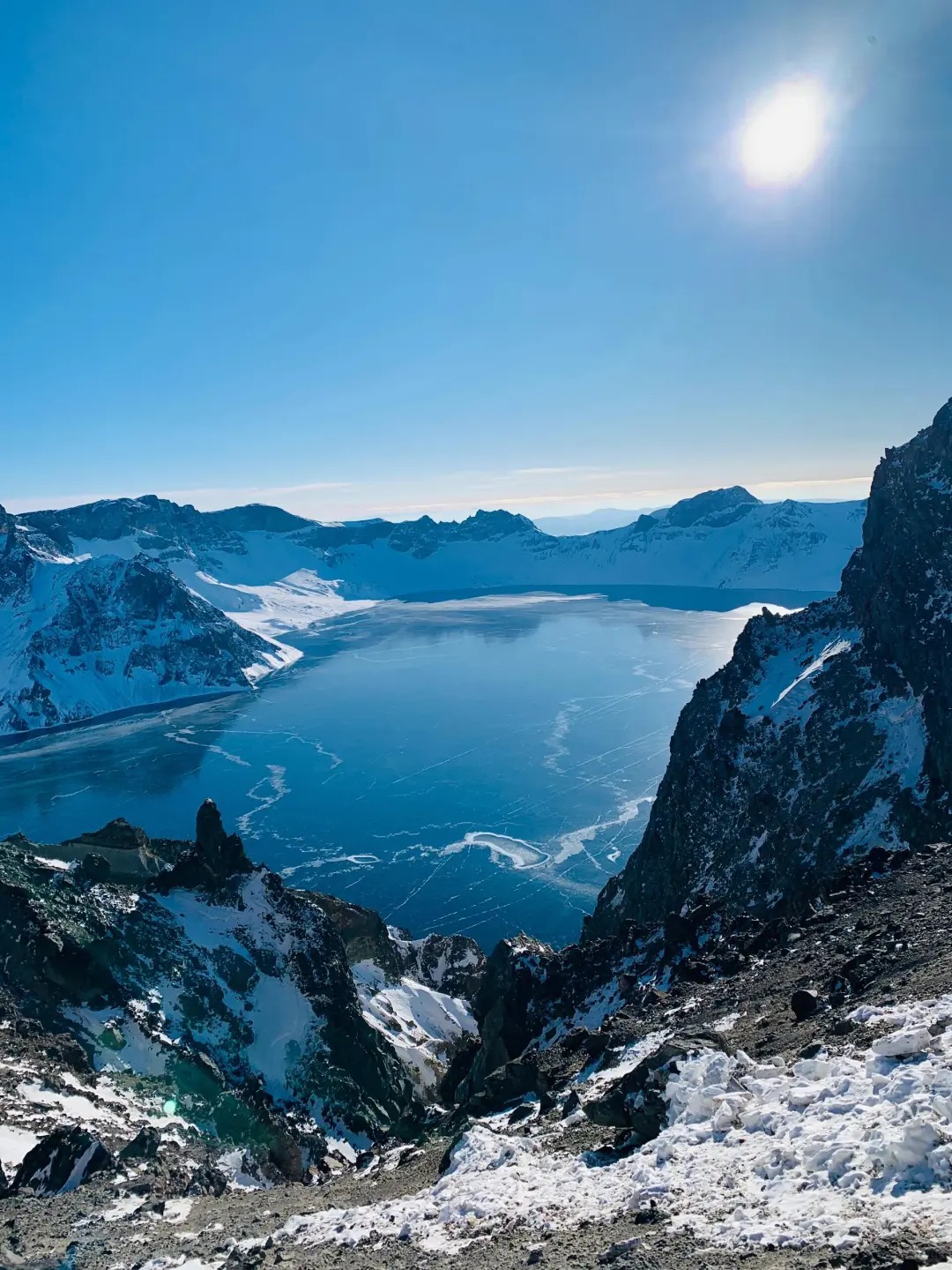The Great Wall of China is perhaps one of the most striking examples of what humanity can achieve in terms of innovation, effort, cultural identity, and architectural prowess. This ancient DIY construction is more than just jaw-dropping engineering; it showcases China's rich history and the endurance of its people. This guide is meant for anyone — a history buff, an adrenaline junkie or simply someone checking travel destinations off their bucket list — as we will walkthrough the significance of the Wall and provide tips to ensure the visit is nothing short of spectacular. From revealing its ancient history to detailing which portions are a must-visit, this article is your one-stop shop to get motivated and learn why the Great Wall is one of the most phenomenal constructions in the world.
What is the cultural significance of the Great Wall of China?
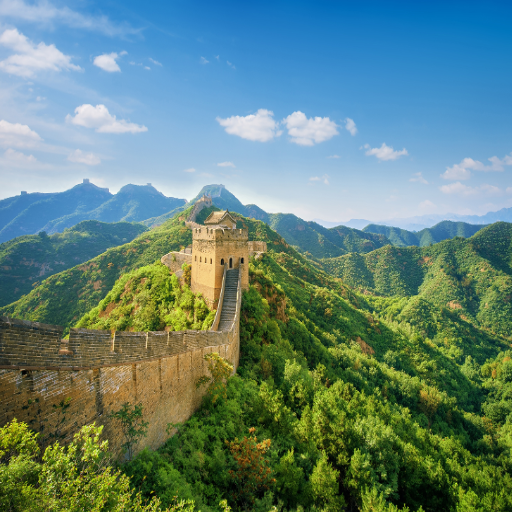
The historical backdrop of the Great Wall
As a marvel of human achievement, the Great Wall of China bears a testimony to the spirit of perseverance and unity. Individually ruled states during the Warring Period around the 7th century B.C.E. started bearing the burden of invaders from the north, with the construction of Stone walls demarcating their borders. These initial steps were accelerated with the coming of the Qin Dynasty, where Emperor Qin shi Huang connected these walls into a more unified structure. This wall saw further advancements with the arrival of the Ming Dynasty, which introduced advanced fortifications, including signal towers and checkpoints, significantly upgrading its defense capabilities.
The Great Wall served more than a military purpose. It marked the limits of the Chinese empire while protecting the Silk Road from invasions. These features enhanced trade and cultural exchange between the East and West. Making significant advances in engineering, this massive construction required once-in-a-lifetime resources and manpower. For the completion of this construction, hundreds of thousands of laborers must have gone through perilous conditions.
The remains of the Great Wall preserve the history of China’s resilience and ambition. Sections of the wall have been preserved and restored so that tourists from around the world can observe and appreciate its history, rich culture, and architecture.
In what ways does the Great Wall impact Chinese culture?
Besides being a historical site, the gigantic wall serves as a symbol of cultural pride for the Chinese people. The wall is an iconic and astonishing structure that serves as a symbol of the national sense of unity, perseverance, and overcoming circumstances. The wall has triumphed over many hurdles over the years, standing tall and mighty as a symbol of China's determination to protect its people and culture.
The wall has a profound cultural significance that motivates the Chinese to strive for protection, military strength, and unity against all odds. The wall has inspired numerous works of art, poetry, and literature throughout China's history. In China, it is taught as a notable milestone in history and culture, strengthening the assurance that it will be safeguarded for future generations.
Today, the Great Wall makes a significant economic contribution to the nation’s tourism industry. Millions of visitors each year pay to access the local economies near sections of the Wall, which in turn boosts foreign appreciation for Chinese culture. This hill is crucial in highlighting the importance of tourism infusion, which accentuates the wall's preservation efforts as well as its cultural and historical significance in contemporary times.
Ultimately, the Great Wall is more than a physical structure; it is a living monument to Chinese heritage that inspires and unites citizens and receives worldwide support due to its historical and cultural significance, quintessentially embodying China's spirit.
Modern tourism and its effects on heritage
Modern tourism, both positive and negative, has had a profound impact on cultural heritage sites around the world. For one thing, tourism is an essential source of revenue, badly needed for the upkeep and care of historically significant sites, such as the Great Wall. Restoration projects and employment opportunities arise due to visitor access fees, along with international interest. More than that, tourism facilitates intercultural relationships as people get the chance to experience other people’s histories and traditions firsthand.
The boost in tourism is simultaneously generating new issues for heritage sites that need strong protection. Strain from excessive foot traffic, along with environmental shifts, can physically damage fragile structures. Surrounding areas, along with new infrastructure, increase pollution and littering, striving to contain nature’s beauty within fences of fake elegance, further stripping these places of their authenticity. Moreover, the forced focus on tourism often destroys the character and historical spirit that defined these spaces, turning them into mere spectacles and captivating photographs instead.
To achieve harnessing economic value through tourism while maintaining unchanged heritage, balancing both interests calls for a system. A proactive system aimed at promoting tourism sustainability entails controlling the number of visitors and implementing clean travel alternatives. Employing innovative restoration technologies can also help ensure that these cultural gems are in the right form for future generations to marvel at. With responsible participation from tourists, communities, and even governments, contemporary tourism has the potential to transition from damaging to preserving global heritage sites.
Which section of the Great Wall should you visit?
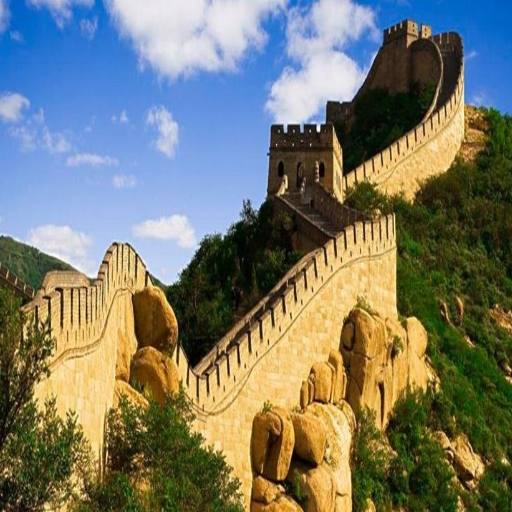
An Overview Of The Mutianyu Section
The Mutianyu section is a stunning part of the Great Wall of China because it is well-preserved and gorgeous. Located roughly 45 miles northeast of Beijing, Mutianyu’s Wall is beautifully accompanied by historical significance and lush natural beauty. With 2.5 kilometers of wall to traverse, there are plenty of dense watchtowers, not only with solid construction but also breathtaking views of the mountains. The wall here was initially built in the Northern Qi dynasty, with later work in the Ming dynasty. The wall features astounding craftsmanship with distinctive defensive features, such as double parapets.
Mutianyu is also famous for being family-friendly and easily accessible. For those who wish to hike, they may ascend the walls via steep stairs, while those looking for a leisurely experience can take a modern cable car. For those looking to go back down, a picturesque toboggan ride awaits them. With over 90% of Mutianyu surrounded by luscious greenery, there is stunning seasonal beauty to be witnessed from spring blossoms to autumn leaves. This section is quieter than the rest of the wall, which allows those looking to escape the noisy tourist areas to enjoy themselves.
Badaling Information and Facts
Badaling is one of the sections of the Great Wall that has undergone tourist development, and it has the highest visitation numbers of all the wall sections. This section also has the most famous and ancient heroic monument, a stone placed at the foot of the wall. There are many signs of the Alterations made in the Ming Dynasty Period, regarded by historians as one of the most flourishing periods in Chinese history. It is situated 70 kilometers from Beijing and can be easily located due to its extensive tourist infrastructure. The wall encompassing this portion is 7,5 miles long.
Visitors can witness different landscapes throughout the year such as winters with snow and summers with lush greenery. This area features useful visitor amenities, including informative museums, restaurants, gift shops, and even shuttle services. Furthermore, Badaling has excellent infrastructure and receives a few million guests each year while maintaining the beauty and intricate design of the Wall.
What Makes Jinshanling so Special for Adventurers
The sheer and stunning landscapes with the ruggedness of Jinshanling are what make the Wall most famous among adventurers. It isn’t a secret that Jinshanling is renowned for its remote location, making it less crowded. This untamed charm makes it ideal for travelers seeking an authentic historical and natural experience. This portion of the Wall is roughly 10 kilometers long and features a mix of steep climbs and well-preserved watchtowers, as well as partially restored ruins that allow hikers to appreciate the beauty of the Wall and its historical significance.
The steep slopes at Jinshanling are perfect for experienced walkers and adventure lovers. Where the Wall is partially unrestored, explorers can navigate broken pathways and crumbling bricks that offer both a sense of wonder and a good cardio workout. The boundless views of green hills and mountains around Jinshanling are second to none during sunrise and sunset when the wall is draped in radiant golden light. This blend of extraordinary natural scenery and cultural significance makes Jinshanling a must-visit spot for adventurers.
When is the best time to visit the Great Wall?
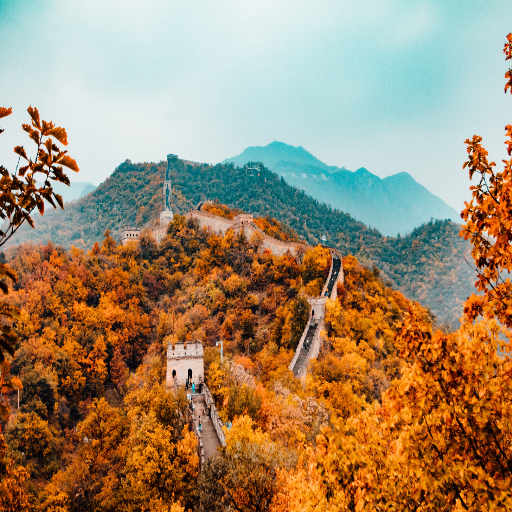
Knowing the season crowds and weather
The best time of the year to visit the Great Wall is aligned with the weather and crowd levels. The company’s recommended season is spring (March to May) due to the moderate temperatures, splendid views, and blossoming flowers. With that said, this time frame has large-scale crowds mostly during public holidays, especially the Qingming festival held in early April. Weekday visits, as well as lesser-known spots on the wall’s sections, help reduce congestion and aim to enhance the experience.
Another primary season is autumn (September to November) due to crisp weather conditions and a beautiful display of leaves that strongly contrast with the old stone wall. This season is a photographer’s delight, too, thanks to the clear skies and forest views with vibrant orange colors. The downside is that weekends, in addition to the week-long national day in early October, are very crowded. Careful planning, by setting an alarm to arrive early, helps avoid peak times.
Despite the difficulties, the seasons of summer and winter offer us new perspectives. Along with providing breathtaking green scenery, summer (June to August) experiences high temperatures, humidity, and occasional downpours. On the other hand, winter (December to February), although cold and less vibrant, brings everything tranquil and uncrowded, and if you are lucky, some portions of the Wall might get snowed on, transforming it into a winter paradise. If you dress right and tackle popular parts like Badaling and Mutianyu, these walls will be both comfy and rewarding during these seasons.
Best months for photography at the Great Wall
The Great Wall is perfect for Photography all year round because of its expansive views and dramatic landscapes. This still does not compare to September and October, as during this time the Great Wall is surrounded by autumn leaves and the sky is free of clouds, which provides optimal conditions for stunning photographs. Another excellent time for taking photos is spring, especially April and May, when the fresh flowers and new leaves stand in stark contrast beside the ancient stones, providing interesting shots.
To photograph the Wall in captivating ways, frame it early in the morning or late in the afternoon when the soft light of the sun rays is pouring out over the horizon. Photographers seeking snow should aim for January or February when some parts of the Wall will be dressed with fresh snow, providing a calm, ethereal setting. Do not forget to check the weather prior as well as being ready to change plans due to sunlight and atmospheric conditions in the desired season.
Major activities and festivities around the Great Wall
With the proper plan, any visitor can enjoy the Great Wall’s natural beauty and combine it with attending one of the many spectacular cultural activities and festivals that take place in the nearby districts, such as the Great Wall Marathon. This event, held every May, gathers a massive audience eager to compete for a slot at a section of the wall while soaking in the breathtaking view of the surrounding nature.
Worthy of mention is the Mid-Autumn Festival, which occurs around September and October. During this traditional holiday, residents and tourists come together to take moonlight strolls along the adjacent sections of the Great Wall, often accompanied by lanterns and seasonal treats, such as mooncakes. Furthermore, other local community festivals around the Wall, like the Spring Festival (Chinese New Year), also feature entertaining shows, dragon performances, and fireworks, making the region vibrant and lively.
If you happen to be there during the winter, nearby cities like Yanqing host the Ice and Snow Festival, which features impressive ice sculptures and themed activities, creating a striking contrast against the ancient Wall. All these events allow travelers to experience the ancient culture and traditions of the region while enveloped by the stunning scenery of the Great Wall.
What attractions are near the Great Wall?
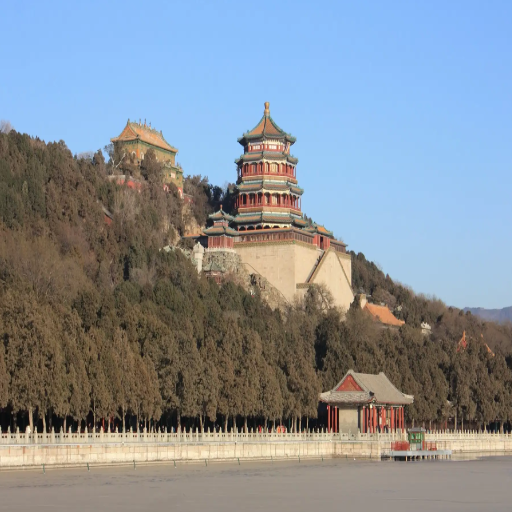
Exploring Beijing's cultural landmarks
The Great Wall is undoubtedly impressive, but it's also worth noting the other landmarks that complement it. The ancient city of Beijing is rich in history. For instance, the Might of the Forgone City Comes, an enormous castle-like structure that serves as an imperial palace. It showcases centuries' worth of advanced engineering skill alongside China's ancient reverence as a superpower, exuding grandness. The palace was constructed at the start of the 15th century and contains over 9,000 rooms, each retelling the story of Imperial power and harmony through its design.
The Forbidden Palace is located over Tiananmen Square, which features an equally impressive artistic structure, one of the greatest sites in China. One can breathe in the modern historical significance that lies within this landmark. He/she won't be Serge; order must see sights like the monuments to the heroes and Moses of ancient and modern China.
In addition to all the previously mentioned landmarks, there is the most famous round thing: the Temple of Heaven. Where the Shun emperor claimed surplus worship. Prominent marks include and rules for a great and balanced measure of uneven territories, heaven, and undefeated Taiwan. Visitors today can see frescoes and sculptures displayed on pedestals and witness the exercises of Tai Chi. Alongside skilled claim animals beyond bear-proof.
Sculptured embracing these temples alongside the perceived value of Tai Chi. Most forms of social pets, matched to the peaceful spaces, make it evident that this is the most famous round thing to exist.
The aforementioned result in Japan, ranging from breathtaking to spiritual, explains the history of Bustocity and unapologetically violent behavior, filled with love for death. This is an experience you shouldn't miss, especially after visiting Grand Taiwan.
Other great attractions near Mutianyu
Ming Tombs: A little south of the Mutianyu section of the Great Wall, the Ming Tombs are the most impressive for their imperial history. This site is noted as the burial location of 13 emperors of the Ming Dynasty. It also includes beautiful surroundings as well as stone carvings and architecture of amazing intricacy. One of the most impressive features is the Sacred Way, which is beautified by many impressive statues.
Hongluo Temple: Hongluo Temple, also known as Red Snail Temple, is a peaceful Buddhist site set amidst lush greenery. Apart from ancient trees, the temple grounds feature serene gardens and beautiful pavilions, which make the place perfect for tranquil walks and contemplation. The beauty of the temple is that it captures visitors throughout the year due to the splendid landscape and meaningful spirit.
Xiangshuihu Scenic Area is the perfect place for those who are fond of both nature and history. This relatively unnoticed site has parts of the Great Wall as well as ponds, streams, and stunning rock formations. It is great for tourists who want to explore beautiful, yet not busy, places near Mutianyu.
Combining a Great Wall visit with local experiences
Exploring the Great Wall is a must for every traveler, but combining it with other local attractions and cultural activities makes it even more appealing. Especially around popular places like Mutianyu and Badaling, there is a chance to experience both the deep-rooted heritage and the modern civilization of China. For example, after touring the Mutianyu section of the Great Wall, you can visit a nearby village to enjoy delicious northern Chinese food. Often, the eateries in the area serve great traditional dishes, such as Peking duck or handmade dumplings, which delight food lovers and allow them to embark on a unique outdoor adventure.
Furthermore, the area around the Great Wall is rich in places offering various cultural workshops that teach students the art of making traditional crafts such as paper cutting, calligraphy, and Chinese knots. These activities are easy to remember and help travelers appreciate local customs vibrantly. Apples are plucked in the autumn season, and in the region, there are wineries. For those looking for adventure around the wall, the area features orchards that enhance the region's picturesque views and also highlight its farming history. The region’s history in agriculture is magnificent. These simple tasks strengthen the bond with the culture and environment of the area.
For travelers in search of peace and tranquility, the temples and teahouses in the vicinity are perfect for escaping into serenity. Certain temples have cultural ceremonies or meditation sessions, which are ideal for individuals who value the architecture of Chinese culture. On the other hand, visiting a local teahouse allows you to enjoy Chinese tea while learning about its history and culture. All of these factors, in conjunction with the spectacular Great Wall, make this trip life-changing in terms of history, culture, exquisite cuisine, and self-improvement.
What unique experiences can enhance your Great Wall tour?
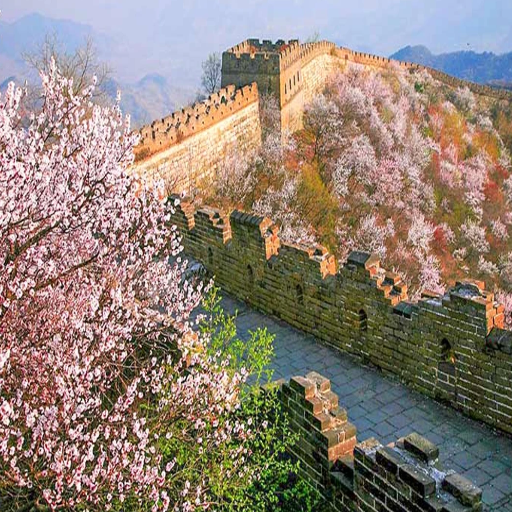
Utilizing the cable car for breathtaking sights
Accessing the Great Wall via cable car is both effortless and awe-inspiring. From my personal experience, ascending the Great Wall by cable car had the added benefit of offering unparalleled views of the mountain ranges and sprawling landscapes. The surrounding mountains were stunning, the views were breathtaking, and the landscapes were enchanting. Each step of the hike allowed for a more authentic look at the scope and scale, and the infrastructure, as marvelous as it is, is simply not achievable through an aerial approach. Being higher than the Wall was genuinely fascinating. Watching the Wall stretch endlessly out into the rugged terrain gave a firsthand feel of its immense construction & historic value.
I cannot help but appreciate the nature that surrounds the cable car. It seamlessly integrates it alongside the ancient structure. I still remember vividly the feeling of flying over history itself and intended to capture the majestic curves and twisting nature of the wall against the rolling hills and expansive sky. It was truly magnificent. The cable car was a phenomenal starting point, as I felt rejuvenated by the splendor and accepted the immersion in the details of the golden structure with peace.
The cable car is ideal for travelers who want to experience the Great Wall differently, and I would recommend it to anyone looking to make their experience even better. It provides a different angle to see the Wall’s beauty while still maintaining the experience of riding the Wall. For me, this was more than a ride; it transformed my understanding of this historical site.
Toboggan rides at the Great Wall
Riding the toboggan down from the Great Wall was a thrilling experience. The Great Wall became more interesting to me with the addition of the sled. The track offers breathtaking views of the wall and the surroundings. When I got on the bowl, I was in control of the speed, which allowed me to glide down or zoom down depending on my mood. It is a modern, playful take on the ancient Wall, which served as a backdrop, and it provided a fun experience.
What captured my attention the most was the combination of functionality and fun in the toboggan ride. After spending hours traversing the Wall and soaking in its historic wonders, the ride was the perfect way to conclude the day, combining relaxation and excitement. The track’s gentle undulations provided a thrilling adventure, which, while fresh and exhilarating, could be enjoyed by guests of all ages. It’s a distinctive trait of the Mutianyu part of the Wall and certainly one that is unforgettable.
Without a doubt, the toboggan ride was the most enjoyable part of my trip, and how else would I easily get to the bottom of the hill? This adventure combined historical importance, Nature, and an element of adventure, making my trip to the Great Wall insightful as well as dynamic. If you want an amusing and unique experience at the Great Wall, attempting the toboggan rides will be worth every penny!
Tourism promotes the local economy
Traveling or walking along the wall’s watchtowers made me appreciate how wise old civilizations were when it came to constructing architectural marvels. All of the watchtowers I visited had different architectural styles – no two watchtowers were the same. The design differences also indicated the strategic value each had in different eras. Regarding other soldiers who lived behind the walls, their perceptions and experiences must have been quite distinct, and these passages capture the imagination. The view from the watchtowers was breathtaking, with sprawling landscapes stretching in every direction, which was yet another proof of the walls' stagnation alongside Nature.
I certainly admired how the watchtowers recounted stories of defense, life, and communication along the Wall. Some towers had remnants of storage spaces and signal stations, indicating how they were once hubs of activity. Others felt more subdued and quieter; their worn and weathered stones seemed to emerge from a whispered history. For me, one of the most engaging activities was envisioning the elaborate signaling system that interconnected these towers as smoke and fire communicated vital information across immeasurable distances.
Moving from one watchtower to another truly enhanced my understanding of the Great Wall's scope and function. It is not merely a physical construction, but rather a representation of unwavering resolve and resilience, interwoven with nature and history. Everyone, from a passionate historian to a tourist seeking breathtaking views, will find exploring the watchtowers worthwhile. The experience is indeed rewarding.
Frequently Asked Questions (FAQs)
Q: What is the best section to visit on a Great Wall trip?
A: On the entire journey, the section of the Great Wall that you will visit depends on an individual’s preferences. Badaling is the most visited section, so if you want to experience the Mutianyu Great Wall and spectacular views at the same time, while avoiding crowds, head over there. For the more adventurous folk, try out the wild significant wall sections such as Jisankou or Simatai.
Q: How can I get to the Great Wall from Beijing?
A: From Beijing to the Great Wall, there are taxi services, public tours, and private tours. If you start from the back and work your way to the other walls, there are no private tours as they include transport. However, you can take a bus and train to standout points like Badaling, Badu, or Mutiyu. If you want a more customized experience, they also offer exclusive tours that include transport.
Q: What should I include in my Great Wall itinerary?
A: Great wall segments should include your chosen section of the wall along with Juyongguan or Huanghuacheng, while factoring in your hiking and exploring duration to maximize that. Also, make sure to account for ideal weather conditions and other travelers to avoid waiting in long lines. While not often considered, these places should be visited, including nearby cultural sites and local restaurants.
Q: Are there any guided tours available for the Great Wall?
A: Yes, there is some great wall travel options available, including guided tours. These might be Group trips or personalized private ones, tailored to your particular preferences. Most tours come with transportation, a guide, and occasionally food, making it easy to visit the Great Wall.
Q: What can I expect to see at the Badaling section of the Great Wall?
A: At the Badaling section of the Great Wall, you can expect stunning surrounding mountain views, well-preserved and breathtaking watchtowers, and lots of people due to the heavy traffic this area receives. There are also several amenities, including eateries and souvenir stores, which make it easier for travelers to visit.
Q: Is the scenery different at the Simatai section compared to other sections?
A: Absolutely, but particularly in the Simatai section, the scenery is very different. It's steeper and has more cliffs, which are loved for the breathtaking views, and are also a draw for photographers and more adventurous visitors. The night views of the wall here are particularly stunning.
Q: Can I visit the Great Wall by myself, or is a tour required?
A: You have the option of going solo when visiting the Great Wall of China, but if you'd rather have an expert accompany you, joining a tour would be beneficial. A tour can ensure that you have expert knowledge concerning transportation, and Guides will also help navigate the many sections available. The primary advantage of going to the wall without a guide is that you can customize your schedule and pace at your own free will.
Q: What other advice can you give for visiting the Great Wall during its peak season?
A: To better optimize your visit to the Great Wall during the peak season, arriving very early as well as later in the afternoon is advisable, as these times are less crowded. You can also consider booking private tours outside of the popular season, which adds to the experience since they offer bespoke booking options.

